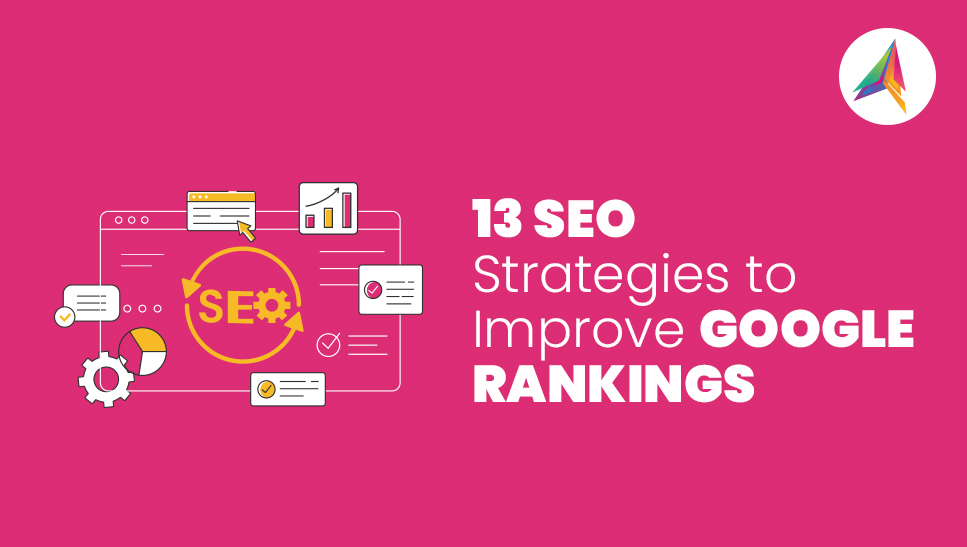Search engine optimization (SEO) continues to be an important tool for any business looking to improve online visibility and gain organic traffic in an increasingly competitive digital marketplace. To help businesses retain and improve search rankings as Google’s algorithms continue to change, it is crucial to implement advanced SEO strategies.
At Web2Byte, we’re dedicated to providing businesses with data-driven digital marketing solutions to help them grow sustainably through the process of SEO. The following guide provides professional SEO strategies you can implement to optimize your website for better Google rankings in 2025.
The Importance of SEO in Digital Marketing
SEO is important to digital marketing because it increases a website’s visibility when protecting search engine results featuring. High rankings drive organic traffic to a website, which is more cost-effective than paid advertising, as organic traffic would not incur continuous costs. Besides, it is a fact that high-ranking websites possess greater credibility and more trust from users. Therefore, SEO is a critical part of any successful online marketing strategy.
On-Page SEO Optimization
Practice of optimizing individual pages to rank higher and earn relevant traffic. On-page SEO elements consist of title tags, meta descriptions, and header tags. Title tags should be kept short (less than 60 characters) and include primary keywords. A meta description is meant to describe the page itself; as such, it should give a summary (150-160 characters). The final element, header tags (H1, H2, H3, etc.), is one of the most important to create proper and engaging content structure. Header tags also help with readability.
Semantic SEO with LSI Keywords
Latent Semantic Indexing (LSI) keywords assist search engines to determine the context of content. In using related terms, relevance and rankings should improve. Tools like Google’s “People Also Ask,” LSIGraph can identify LSI keywords so they can be integrated, naturally, into the content, headings, and meta descriptions.
Technical SEO for Performance
The purpose of technical SEO is to help search engines crawl and index your site. Mobile optimization is especially relevant with Google’s mobile-first indexing approach. You should also focus on optimizing page speed with items like image compression and caching to better the user experience. An XML sitemap (and robots.txt files) will help search engines find your pages. Structured data markup will help clarify what you mean as well.
Aligning Content with Search Intent
To create relevant content, you need to understand user intent. Informational queries want lists of detailed guides. Navigational searches want brand pages. Commercial intent will want comparisons. Transactional intent will want product pages with optimized content for the search terms with strong calls to action.
Strategic Keyword Research
Effective keyword research will identify search terms with high search volume and low competition. Long-tail keywords are often more effective and have less competition.
The best way to analyze keywords for potential opportunities is to use Google Keyword Planner and SEMrush. Follow competitors to see their keyword objectives.
Building High-Quality Backlinks
Search engines value authoritative backlinks for ranking websites. Guest posting on authority blogs, broken link building, and creating “share-worthy” content (sharing infographics and research studies) are all strategies for building links that are effective.
Improving User Engagement
High bounce rates negatively impact rankings. Improving readability with clear formatting, internal linking, and multimedia elements (videos, infographics) keeps users engaged longer.
Creating Comprehensive Content
High bounce rates will hurt rankings. Well-structured formatting, engaging visuals, and strategic internal links make content easier to read—encouraging visitors to stay longer and interact more.
Optimizing Visual Content
Long, well-researched content (1,500+ words) outranks shorter content in search. Content that includes expert commentary, data-driven analysis, and case studies will position the writer better as a trustworthy and authoritative source.
Enhancing User Experience (UX)
Having a well-structured website with appropriate navigation increases your rankings. Good load times, mobile responsiveness, and accessibility also contribute to a user’s web experience.
Regularly Updating Content
Keeping relevant content that is time-sensitive and statistics up to date, new sections, or editing inaccurate information will always lead to maintaining relevance and rankings.
Targeting SERP Features
Maximizing value with featured snippets, knowledge panels, and local packs increases visibility. Structured data markup allows search engines to display content in rich results.
Monitoring and Adjusting Strategies
Facebook, Analytics, and Search Console can track performance so you can make data-based adjustments. Conducting competitive analysis helps you understand industry benchmarks, refine your strategy over time, and maintain a strong market position
Conclusion
SEO is a long-term investment that requires consistent effort and adaptation. By implementing these professional strategies, businesses can improve their Google rankings and achieve sustainable growth.



